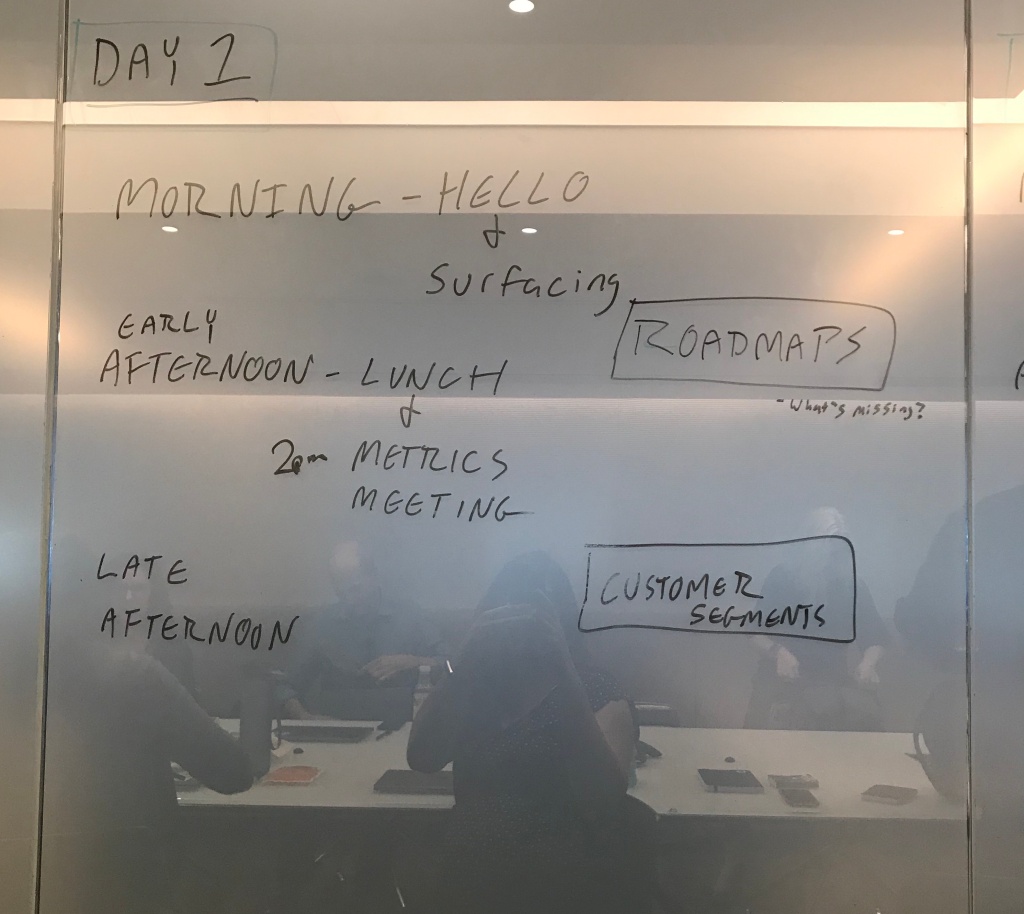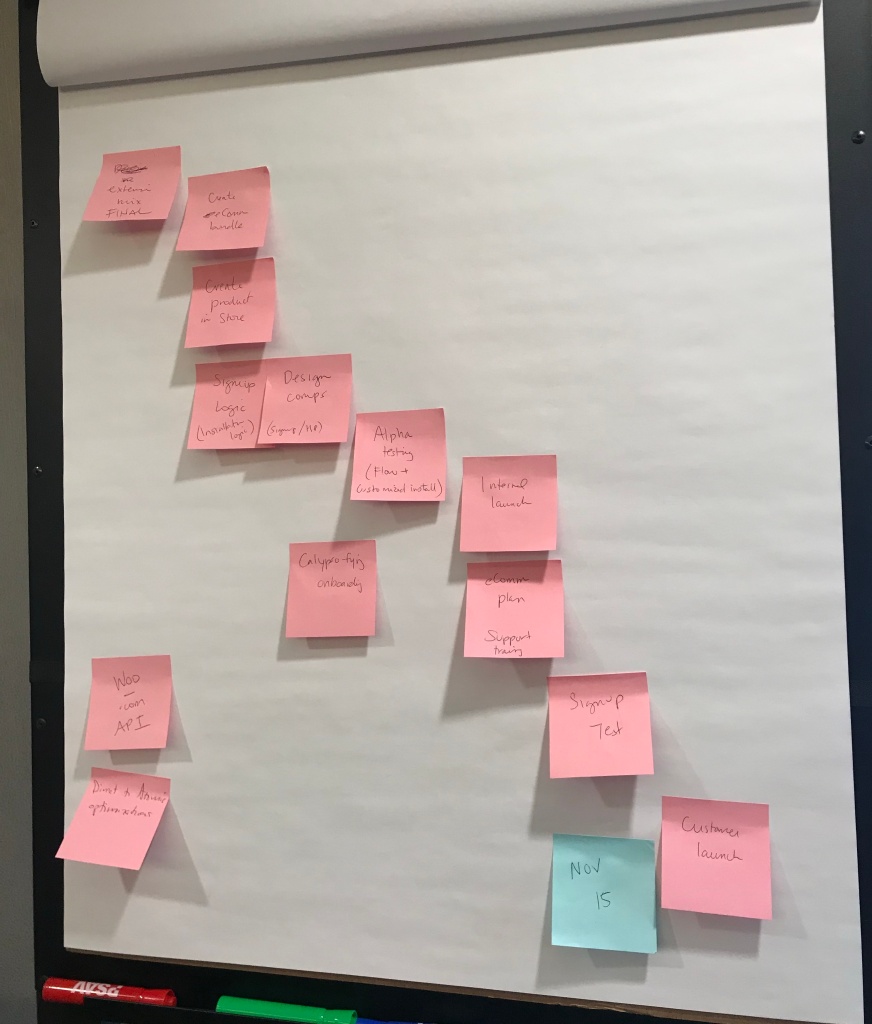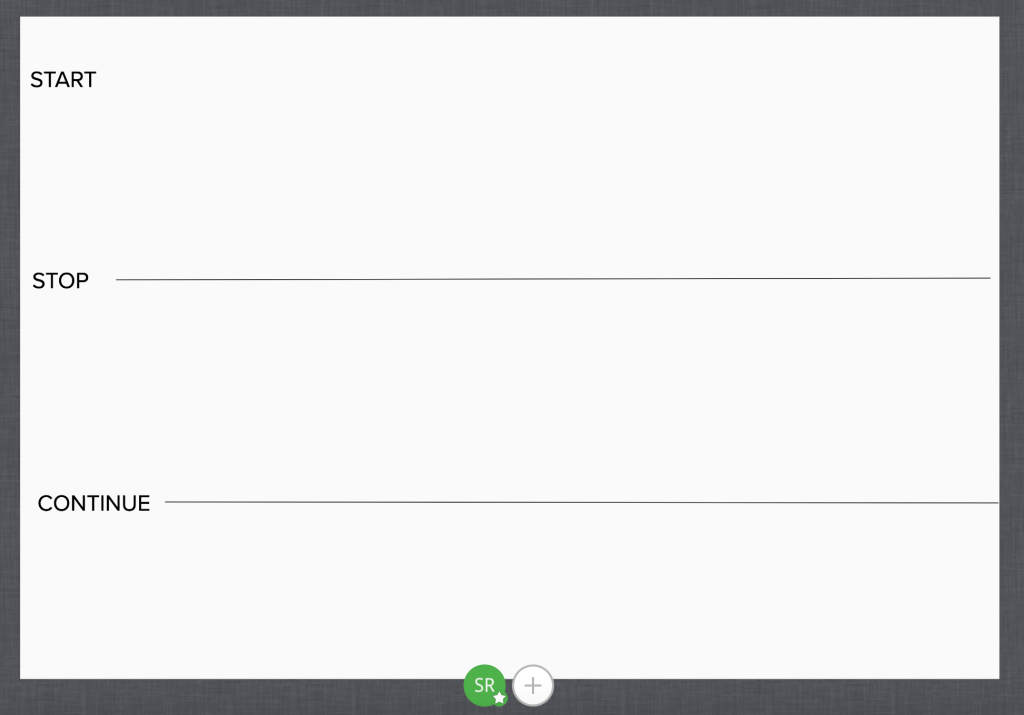July 8, 2020 marked 10 years of working remotely full-time for a fully distributed company with no offices!
You started on 2010-07-08. Of the xxx other a12s, (2.5%) started before you and xxx (97.5%) after you.
My internal statistic about being an Automattician.
You may have read my 10 Lessons from 4 Years Working Remotely at Automattic I published a few years ago, ~6 years ago, in fact.
When I first started drafting this follow-up article, I was going to remark on how remote work is more popular than ever, and the number of companies offering remote jobs continues to grow. When Automattic started it was one of the very few 100% remote companies, and now it’s one of the largest of a growing list of fully remote companies.
But COVID-19 has changed what it means to “go to work” for a large part of the workforce. For many companies, the return to an office is in the distant future, and working remotely is their new reality. Most of my Silicon Valley neighbors are working from home through the end of 2020, and many other companies are shifting to fully remote in the future.
My initial lessons from working remotely still hold true, and a few have become even more important. I still believe firmly:
“…working in a distributed team has changed how I will look at work and being productive for the rest of my life.”
10 years ago, when I started there were ~50 people at Automattic, and now there are almost 1200 globally, in over 70 countries and in pretty much every timezone. I helped scale the WordPress.com VIP enterprise platform team from 5 people to several dozen (and today it’s even bigger), before switching to be the first full-time marketer working on the consumer product, WordPress.com, and helping grow out the marketing function within the company through hiring, experimentation, and diving deep on the product side. All this, without a single office.
While I believe most people and companies can work effectively remotely in the short-term, to make a distributed team work in the long-term it takes deliberate planning and thoughtfulness about your culture, leadership, strategic planning, and team-building.
Here are ten more leadership lessons about working for a distributed company, focused on growing and managing teams and products remotely.
A culture goal: psychological safety through vulnerability, not physical proximity or presence.
Psychological safety is more important than physical togetherness and is the best type of environment to cultivate.
Automattic (pre-COVID) met in person once a year as an entire company. This all-company meetup shifted its focus a little over the years. One of the goals used to be doing cross-functional projects as a sort of hack week in person, with colleagues working together who normally don’t. It was a great way to launch new and interesting projects outside the realm of normal work, and I still remember the excitement of launch day and presenting a newly-launched project to colleagues on stage.
As Automattic grew, an educational aspect was added to the meetup and it was an opportunity for colleagues to be teachers, and for attendees to have a beginner’s mind. While a meetup may result in doing work together, the real goal is connection and trust on a human level, not just being physically together.
Why, then, vulnerability? Vulnerability (and authenticity) is a path toward trust. Trust can happen organically, but leading with vulnerability helps jumpstart the process. One of your goals as a leader is to say: this is safe. You are safe. Questioning, collaborating, and failing are safe here. They’re opportunities to learn as individuals and as an organization.
The remote leader has to always weigh what might be accomplished naturally (or rather, passively) building trust with the opportunity costs if trust doesn’t grow. There are no hallways, meeting rooms, or team lunches to assist with creating trust informally within your team or across your peer group. Deliberate, strategic, human connection through vulnerability should be a goal of every remote leader.
How do you get started leading with vulnerability? That’s another article, but below are some tools.
Tools: Dare to Lead by Brené Brown is a must-read for leaders, and can be helpful for anyone trying to lead with vulnerability. Read about psychological safety for teams on HBR. Radical Candor is a good read (even better podcast) and there are some exercises you can do as a team to start promoting this.
Deliberate time and space (online or offline) for connection is critical.
Once you decide to lead with vulnerability and not focus on physical proximity to do so, you need to prioritize connecting as a (leadership) team and make space for the important but not urgent discussions.
“Remote meetups” have been steadily gaining popularity with teams and leadership teams. These meetups are a meeting of the minds, and of ourselves as humans. I always made sure to include some general ice breakers since teams grow and, even though many of us may have already communicated on work projects, we may not have seen each other’s faces or learned anything about who they are as a person.
Ideally you’d run these remote meetups quarterly as a team. They could include your quarterly or periodic planning but I’d suggest doing that in a separate meeting so your meetup can focus more on how you feel and work as a team, and for discussions which are important but not urgent. The urgent things will always find time onto your calendar and into direct messaging, but the important-but-not-urgent are the fabric which keep the team motivated, in-tune, and working closely together.
After an ice breaker, spend time talking about big themes facing you as a leadership team. Sometimes the discussion itself is the outcome, as is checking to make sure you hear each other and acknowledge tensions internal or external to the team, and identify action items to own moving forward.
I wrote more about the importance of remote meetups and how to run your own NIRL / remote team meetup in this article.
Tools: Doodle and World Time Buddy for finding dates and times, and collaboration tools like Mural.co or Miro for whiteboarding and Google Docs.
Deliberate space & time for sharing ideas and innovation must be made.
Create space and time into “normal” work to discuss ideas, learning, and other sources of inspiration. They may lead to a discovery or innovation.

Working from home can be a time saver for a lot of people. Without a commute, they might save hours they would have spent in a car going to and from their “productive space” aka the office. Without an office, an organization has the potential to miss out on the benefits of hallway conversations, discussions at lunch, and drop-bys that can be spontaneous opportunities for idea pitching, consensus building, debating, and other catalysts for collaboration and innovation.
A remote team can be very good at prioritizing the urgent and important. It might take more effort to make time for the important and not-urgent work. Strategic planning, especially further out than the upcoming quarter or reporting period, can fall into this important and not-urgent bucket and therefore deliberate time for innovation must be baked into your remote work environment.
Strategic and growth planning are rather obvious outcomes to design for. What also needs deliberate space and time is the exchanging of ideas, lessons learned, sources of inspiration and in general knowledge sharing amongst team members and peers. This can be much harder to “plan” for and to make space for, but it’s in these casual conversations and prompted sharing that might spark an idea or opportunity that the organization hadn’t previously considered.
Sometimes that means calling for a meeting with a very loose agenda, proposing an opportunity to do a light competitive review, or giving the team prompts to knowledge share or do a show & tell on a regular basis.
Tools: Some of the tools are the same for connection – making time and opportunities for colleagues to interact. Prompts like Geekbot in Slack on a regular basis might help include some non-project talk with colleagues, but the lead will likely need to encourage sharing and praise people who bring back outside information and knowledge into the organization in a more proactive way.
Remote work isn’t for everyone: hire self-starters to multiply your organization’s output.
Cultivating and encouraging communication, commitment, and curiosity are key.

I dedicated a whole article to the type of worker who will be most effective in a distributed company – you should read that next, but it’s clear that:
Remote work can accommodate multiple management styles as well as different types of workers, but you’ll really see the multiplier effect in a distributed company when you can build and grow an organization made up of self-starters.
At Automattic a paid trial is part of most interview processes which gives both the company and the interviewee an opportunity to “try out” what it will really be like to work in a distributed environment. As I mention in my 3Cs of Essential Skills for a Good Remote Worker: Communication, Commitment, and Curiosity, the trial can be a pretty decent opportunity to see if the person can self-manage their responsibilities, communicate often and clearly, and in general show up to do this small project. You’d be surprised how many folks don’t show up – they can be inconsistent and not committed, some even ghosting.
While your company may not be able to do trials as part of the hiring process, emphasizing these 3Cs in the onboarding process and establishing norms with your team can help to help you move away from a physical presence and “presentism” as a way of managing people.
Read: 3Cs of Essential Skills for a Good Remote Worker: Communication, Commitment, and Curiosity.
Tools: For communication, Slack, of course. To keep yourself organized, Notion is quickly becoming my second brain and a go-to to store mixed media, notes, and information. I migrated from Wunderlist after ~9 years using it to Microsoft To Do and it’s been a good place to do checklists, too.
Remotely, you need to change the way you “meeting.”
Not every meeting needs to be a synchronous meeting. Make the move towards asynchronous everywhere and anytime possible.

I talked last time about how many business meetings are useless, and with remote work suddenly being thrust upon many workplaces, the stories I’m hearing about Zoom fatigue make me shudder.
If you’ve moved your entire workforce into an endless series of synchronous calls and videos, you’re doing meetings wrong as a remote organization.
It’s important to treat synchronous time as precious, to be cautiously used, and to try to move everything else to asynchronous as much as possible. Be conscientious about what types of interactions are broadcasts, status updates, alignment, or working sessions. Could all or part of those interactions be asynchronous? Could you plan the work so you give the other collaborators time to participate asynchronously, avoiding the need for urgent, expensive synchronous time?
Do you document your decisions and discussions, and make a habit to document as you go? Written communication becomes critical and a basic, powerful tool for the distributed workforce. Read A Million Words Published at Work in a Remote Company to see how I document continuously, and why.
Work as though you’re constantly training your replacement: document, explain, and be as public as possible with decisions / discussions – leave a trace! Your colleagues will appreciate it, your team can learn and grow because of it, and you’ll (most likely) still have a job.
Now’s the time to re-examine and change the way you “meeting” in your organization.
Tools: Check out the five levels of autonomy in remote work and look at where you can help your organization move away from synchronous meetings. Some key tools for remote teams are on Distributed.blog, Automattic’s podcast about remote work.
Remotely, you need to change the way you lead meetings.
Making space for participation of all kinds takes preparation and thoughtfulness.

In part 1 of the lessons learned from working remotely, I said “most meetings in the traditional business world are useless.” Lots of companies now are shifting from working in an office to 8-12 hours of Zoom calls of these useless meetings. No wonder you’re fatigued; you’re doing meetings wrong.
Though written communication is a very strong skill needed in a remote company, there is likely a wide variance of personalities and work styles in the company. A remote company can attract both clear extroverts (like myself) and introverts who would be fine not to meet up even twice a year.
One of the ways I’ve had to learn how to lead team and project synchronous meetings is to be sensitive to all types of personalities. As Automattic has grown, it has gone from a company where I knew who had kids and where they each lived, to video calls with people whom I’d never met, never worked with, and in some cases I wasn’t even sure what country or city they’re sitting in.
As an extrovert I am especially aware I need to make space for others to contribute in a synchronous discussion. However not everyone wants to be included in that moment, especially when that means calling on someone spontaneously. Some of the advice I’d heard in the past for meetings was “call on people who haven’t spoken up” to make sure diverse voices are heard on the call. This is not a one-size-fits-all approach, and can definitely backfire.
In one audio discussion where I called on someone because I was very sure they’d have a valuable perspective on the topic, they didn’t say much and later sent me a direct message that my method made them feel attacked and the opposite of valued. I was shocked and saddened because I valued them a lot and only wanted to make sure they were “heard.”
Here’s what I’ve tried / changed since then to help create a more equal participation opportunity and get a better sample of team input:
- Make time, or silence, to encourage participation. I literally count (silently / to myself) to three. I want to leave enough space for those who are hesitant to contribute enough time to get a word in, so I’ll often do several rounds of “does anyone else have anything to contribute?” and count to myself as I wait for replies. For an extrovert three seconds feels like an excruciating long silence that I’ve been conditioned to fill historically with talking, but it gives others a chance to speak. I’ll often take a drink of water to show I’m in no hurry. Alternatively, you might ask everyone to unmute for the discussion part of the conversation so there’s a lower barrier to participate when desired.
- Make each voice equal with a vote. When I need a group vote or gauge of group consensus, I ask everyone to use their thumbs in a simultaneous, visible vote on the call – thumbs up, neutral(sideways), or down. This allows each person to have equal “weight” in the discussion/outcome and immediately others can see it too. Be sure to include that neutral option! It may mean you need more discussion or viewpoints, or that support isn’t as strong as you thought.
- Prepare expectations. When you have a topic or discussion point you’ll want folks to talk about, let them know about it before the call and ask them to be ready to contribute something to give them a chance to prepare and not feel put on the spot. Most of my meetings have an open agenda and rolling/consistent doc that team members can access at any time and add thoughts or discussion points as needed.
Tools: Having an operating manual for yourself and team members is helpful – this “user manual” template is a good start and answers questions like how to best communicate with you, or how to help you, etc. Have each person on your team fill it out and talk about it together. I also created this Mural.co template to share an “How I Roll” icebreaker exercise for any team and especially for remote teams.
Continuous networking for the remote worker is even more critical (but it doesn’t have to be with colleagues).
Networking locally and externally to work becomes even more critical, as your work network expands in different geographies and areas you might not have anticipated or even need in the future.

The goal of working remotely is not to work alone. Hardly! You’ll still crave interactions, chatting, and just riffing on ideas as I mentioned in part 1 of the lessons learned from working remotely.
As a remote worker, the world is your office. I have had team calls across 9 timezones, and division/all-hands calls across every timezone. At any moment, I can get a personal recommendation for delicious lokum in Turkey, which beach isn’t overrun with tourists near Cádiz (Spain), or where to eat the best New Haven-style pizza in Pennsylvania.
However, it is part of the remote leader’s job to network, whether that’s to bring in different perspectives or experiences from similar roles, industries, or just to enrich your own knowledge by connecting with people you respect and admire. Network always, often, frequently. I’ve written about how Networking is for Everyone, and How to Talk to Strangers (aka Networking).
Currently, I dedicate some time to deliberately network online and offline, as a board member of the SCU MBA Alumni Board, and in several online groups where I also connect regularly with mentees and other peers. I’m always open to connecting.
Tools: If you want to know more about how I feel about networking and founding community, read What I’ve Learned as a Serial (Community) Founder: The Community Life Cycle. Facebook groups are going strong and there are some really interesting ones to join. Same with subject-dedicated Slack groups, though I feel a key ingredient missing from them is a highlight reel of ‘what you missed’ after being away.
Continuous networking with colleagues is essential, too, to increase collaboration and reduce isolation.
You work with smart people, and you’re always “connected” but make sure to keep networking with them throughout your work life.
After switching from the enterprise offering to focus on the consumer product at Automattic, I realized I wasn’t crossing paths online with any of my former enterprise teammates and I set up some monthly “coffees” with colleagues.
When I came back from an extended leave, I set up 30-ish colleague “catch-ups” on video, much like I would have done if I had gone back into an office, and focused on chatting about life but also what had changed (or didn’t) in the organization while I was out.
As life gets more complicated, and as a remote worker you get better at the “shut down” between work and the rest of life at home, it can be hard to remember to make time for those serendipitous and no-agenda moments with colleagues.
Networking and reaching out to people I don’t know well comes pretty naturally to me (see the previous section about networking) but I realize for others in my organization, it may not.
I decided not to leave this entirely to chance, and I shared a team assignment related to this with the rest of Automattic: encouraging connecting with fellow colleagues once a week (or 4x a month), and I called it the “1% Connect”. The goal is twofold: first, connecting with colleagues outside the team and immediate department has the potential to enrich the team’s work, influence, and organizational understanding by getting to know colleagues and helping them get to know the team members, too. Second, it also exposes the team to more diverse points of view and information, and it will make them better longterm employees if they feel connected to more people in the company outside of their immediate teammates and manager.
I also started a Donut-enabled monthly pairing for managers who were interested in networking with other managers in the company, so they could share resources, tools, and tips across teams and leadership. Every 4 weeks, two managers are paired up to chat and share knowledge, and then it starts all over again the next month.
Tools: Some folks use Donut (in Slack) to help facilitate these serendipitous meetings, or to pair leadership or colleagues on a regular basis, randomly. I also wrote some outreach “scripts” or simple messages they can use to send an outreach to colleagues to invite them to connect.
Use your shut down routine to set you up for future success, and block time for deep work.
Identify top priorities and deep work on a rolling basis and be protective of that time on your calendar.
In my first set of lessons about working remotely, I mentioned the importance of a routine to start the day. It’s still important but I’ve come to realize my shut down and weekly prep routine is even more important to set me up for success for the following days.
For many of us working remotely, our office is in our house. I have worked out of coworking offices on and off in 10 years, but the majority of the time I’ve spent working remotely has been physically in the same place as where I sleep. I make sure to distinctly shut down and I aim to set up the next day’s top priorities before I close my computer for the day. I identify 2-3 things to dive into the next day, so I can orient myself around them immediately when I sit down and open my computer to work. I might write those on a post-it, on my weekly planner, or put them in my external brain, Notion.
I talked about urgent, non-urgent, important, and less-important work. While reading Deep Work, I reaffirmed that my personal deep work also needs to be continually prioritized, and I try to make sure at least one of my to-do items is deep work. On Fridays, I look at the following week and identify if I need to block off deep work time on my calendar to make sure I can get to important but not urgent work.
Tools/tricks: My current weekly calendar is from kikki.k but this weekly calendar version at Amazon is a close approximation, too. Highly recommend a huge stash of Post-it notes and/or index cards for notes / quick lists, and Notion is a great second brain. This article from HBR about How to leave work at work is a good read. And using a Pomodoro timer / tool is always a good focus tool for deep work.
You still need to take vacation time even if you don’t leave the house.
Keep your team focused and engaged by encouraging them to step away.
Last time, I remarked how unlimited vacation also comes with a risk of not taking enough time off, and one way to do that is to make sure to take holidays in whatever country you’re in.
We may not be traveling as much as we could or might like to do right now, but it’s more important than ever to take time off.
What COVID-19 has taught us so far is that we need to take care of ourselves first so we can be better colleagues, partners, and parents in normal times, and especially in unprecedented times.
It’s likely your team needs repetitive and consistent permission and reminders from you to take time off, even if they’re not going anywhere. Parents without childcare are really hurting right now. Set an example to your team, and take some time off. Mention planning some time off to your team. Repeatedly. If something is important, it bears repeating until you’re sure people know you think it’s important.
A visual can also help. Share a screenshot of your team’s vacation calendar, as a discussion point in a team call for a few weeks. Encourage them to take time off regularly.
Tools: Plan some time off. Book spot days off well ahead of knowing if you’ll “need” them.
Still hungry for more about remote work? Go on to read a few other articles I’ve published about remote and distributed work here on this site. Automattic is hiring.
Categories: Productivity, Self & Finance, Remote and Distributed Work



Hi Sara, I’ve been following your posts for a while now! I admire and respect your suggestions, particularly what you implement for yourself to try and grow and make room at the table for all voices.
Do you have any advice for someone like me who considers Automattic a dream company to work for and wants to work with you (all) someday? I have applied for a handful of positions in the past couple of years and I know how competitive it is!
Thanks and continue to be well in this age of the pandemic!
Yes! I put a few things into this article which should help https://whenihavetime.com/2015/06/12/ask-me-how-do-i-get-noticed-when-applying-for-a-job/ and if you’re applying be sure to personalize your email / application as best you can. If you’re re-applying for a position after some time, be sure to call out what you’ve learned / changed / improved in the meantime! Good luck with the process.
Thank you for publishing this at a time when we need it more than ever. I’ll be sharing for each section… and then going back to the earlier one and doing the same!
Thank you!
Thought-provoking article, useful lessons for me and others who are used to being present in an office to now working from home. Really liking the ideas of bringing vunerability to managing, and completely agree that synchronous meetings are bad (I got so fed up last week with that, now considering blocking some time after meetings just to avoid this!)
I disagree with the idea of hiring self-starters only; first you lose some diversity, and secondly you may not have self-starters from migration to traditional to online. Perhaps self-starter traits can be encouraged with coaching/mentoring?
Interesting comment, thanks. I definitely agree the transition from traditional/office to online requires additional coaching and thoughtfulness by all management levels on pretty much every traditional ‘touchpoint’ of their employees and how / if those processes will continue or will get replaced by newer, remote-friendly processes. That transition is in itself a huge undertaking.
With regards to self-starters specifically, this is another consideration that will need thoughtful planning in terms of organizational design and management responsibilities, as mentoring and coaching can mean needing more synchronous time and overlap with those who need coaching, and that in itself can start to slow down the autonomy of the team, division, or organization.